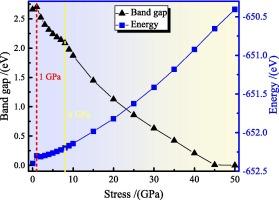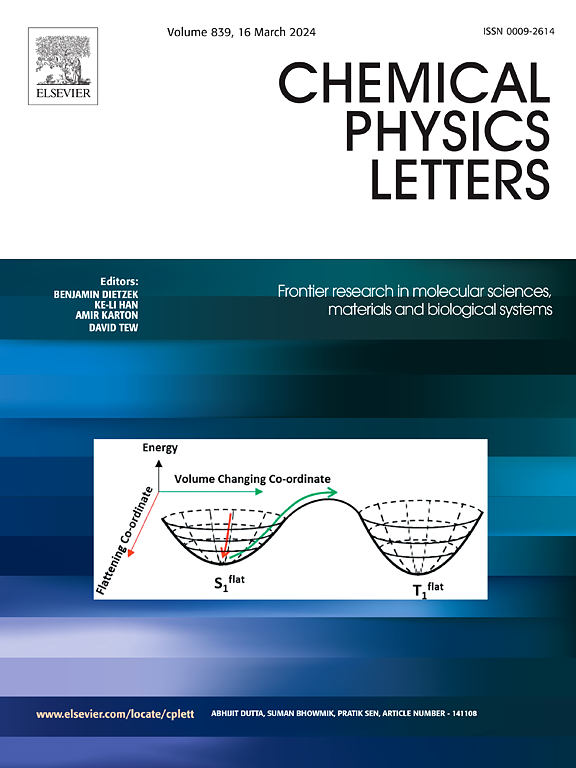Stress affects the electronic transition and effectively regulates the optical properties of SnS2
IF 2.8
3区 化学
Q3 CHEMISTRY, PHYSICAL
引用次数: 0
Abstract
SnS2 is a Ⅳ-Ⅵ group semiconductors, and has excellent photoelectronic properties, but the properties are significantly affected by stress. So, the properties and influence mechanism are studied using first principles method. The band gap of SnS2 shows three changes points with stress, which occurs at 1.0 GPa, 7.0 GPa and 8.0 GPa, respectively. The reason is that the electrons of Sn-5 s, Sn-5p and S-3p are sensitive differently to stress, the electrons are easy to be excited, and the electronic structure and optical properties are affected. The and η of SnS2 show three different variation rules, which are similar to the variation of the band gap, and the first peak of increases with the increase of stress. , the edge of absorption and k are move to the direction of low energy with the increase of stress. It is means that stress can effectively regulate the electronic structure of SnS2 and improve the utilization of light.

应力影响电子转变并有效调节 SnS2 的光学特性
SnS2 是一种Ⅳ-Ⅵ族半导体,具有优异的光电子特性,但其特性受应力的影响很大。因此,我们采用第一性原理方法对其性质和影响机理进行了研究。SnS2 的带隙随应力出现三个变化点,分别出现在 1.0 GPa、7.0 GPa 和 8.0 GPa。原因是 Sn-5s、Sn-5p 和 S-3p 的电子对应力的敏感性不同,电子容易被激发,电子结构和光学性质受到影响。SnS2的ε1和η呈现出三种不同的变化规律,与带隙的变化规律相似,且ε1的第一峰随应力的增加而增大。随着应力的增加,ε2、吸收边缘和 k 都向低能方向移动。这说明应力能有效地调节 SnS2 的电子结构,提高光的利用率。
本文章由计算机程序翻译,如有差异,请以英文原文为准。
求助全文
约1分钟内获得全文
求助全文
来源期刊

Chemical Physics Letters
化学-物理:原子、分子和化学物理
CiteScore
5.70
自引率
3.60%
发文量
798
审稿时长
33 days
期刊介绍:
Chemical Physics Letters has an open access mirror journal, Chemical Physics Letters: X, sharing the same aims and scope, editorial team, submission system and rigorous peer review.
Chemical Physics Letters publishes brief reports on molecules, interfaces, condensed phases, nanomaterials and nanostructures, polymers, biomolecular systems, and energy conversion and storage.
Criteria for publication are quality, urgency and impact. Further, experimental results reported in the journal have direct relevance for theory, and theoretical developments or non-routine computations relate directly to experiment. Manuscripts must satisfy these criteria and should not be minor extensions of previous work.
 求助内容:
求助内容: 应助结果提醒方式:
应助结果提醒方式:


